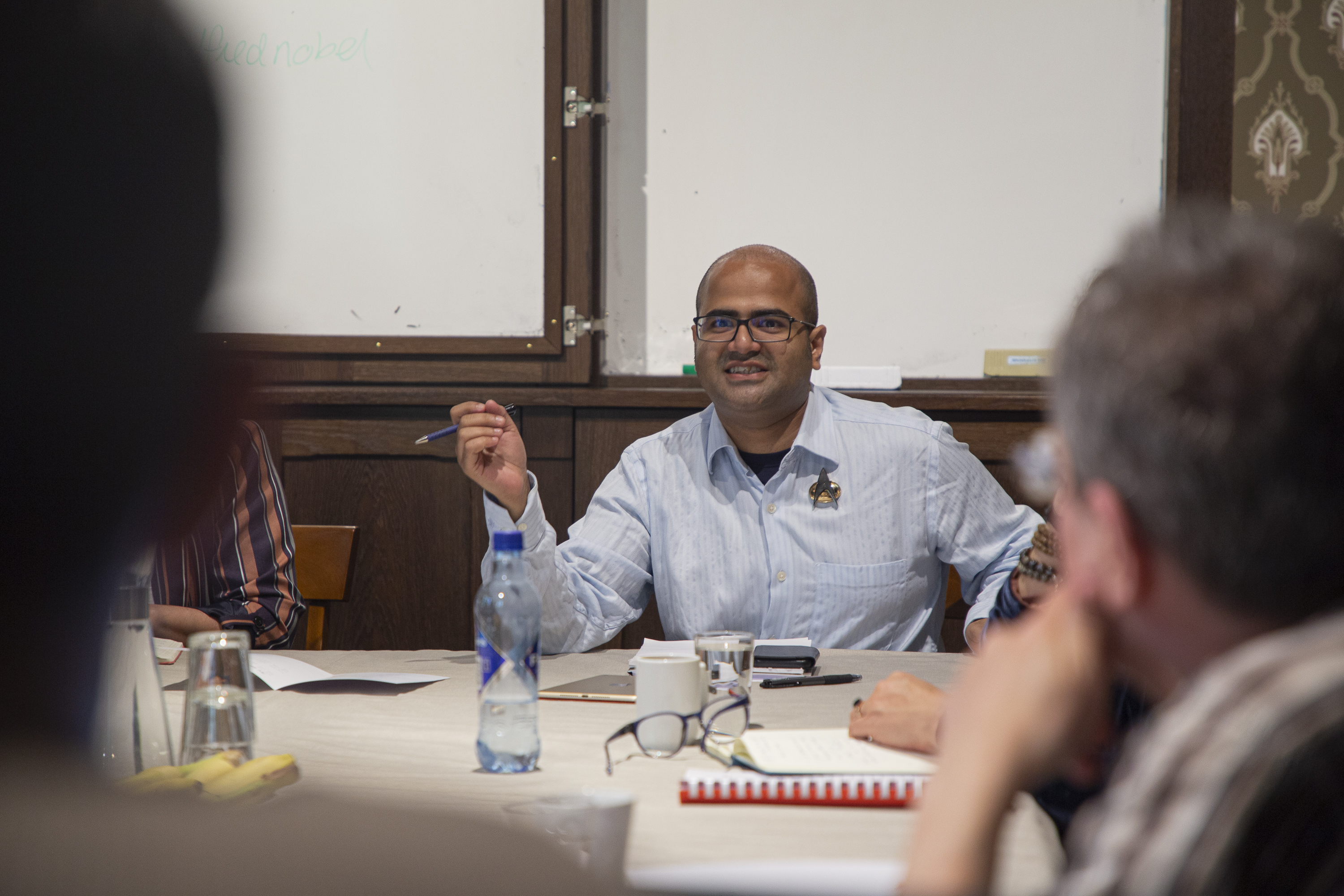CAS Alumnus Bodhisattva Chattopadhyay receives prestigious ERC stipend: ‘CAS helped me prepare to be prepared’

How do you see the future of the society you live in?
Senior Researcher at the Department of Culture Studies and Oriental Languages at the University of Oslo, Bodhisattva Chattopadhyay, explores how images of the future are produced in different media, and in different geographical spaces.
Chattopadhyay believes that the way we look at the future, can help us change the present, and as a result, the future of our present.
Non-Anglophone and POC voices in science fiction
Over the last few years, the former CAS Fellow has tried to develop a framework for the study of futures produced in the work of non-Anglophone or marginalized POC (people of colour) voices in the field of science fiction.
He says that the main problem in the field has been that non-English language fictions are only available for individual experts of those languages, which make them appear less weighty.
‘This fallacy of composition skews our perspectives on what different cultures and communities think of when they relate to the future’, he says.
With the ERC funding, he can continue this work.
‘This funding will allow me to assemble a team with broad multilingual and multimedia competence and work with them over five years to develop a better theory for the study of future fictions. I call my theory, tentatively, CoFutures.’
Describes CAS as important in the application process
Chattopadhyay was Fellow at CAS in the 2018/19 project In Sync: How Synchronisation and Mediation Produce Collective Times, Then and Now (led by Helge Jordheim and Espen Ytreberg), which explored how actions and events synchronise societies.
Jordheim was Chattopadhyay’s PhD supervisor, and the two have worked together for a decade now. He has also worked with others in the InSync project for several years, especially Geoffrey C. Bowker.
What did your stay at CAS and engagement in the CAS project mean for the ERC application process?
‘I think the CAS year was absolutely important for a number of reasons’, Chattopadhyay says.
‘One of the best things about the CAS year was the amount of time it freed up for me to read and work on my ideas’.
His work with Bowker resulted in an article in NatureCulture earlier this year, while he and Jordheim co-created “Multiple Times of Everpresence”, an artwork currently on display at Garage Musuem of Contemporary Art in Moscow.
Lastly, he presented the broadest outlines of his framework, and the rationale behind it, at three CAS seminars, which he describes as helpful in the preparation for the interview stage of the ERC. The workshop on Future histories from the Middle East and South Asia will lead to a journal special issue and a co-edited volume.
‘All these different experiences were critical in helping me ace the interview in Brussels, since the ERC interview was undoubtedly the toughest interview I had ever faced’.
‘As my dad is fond of saying, “one must prepare to be prepared”. So, a big thank you to CAS for helping me prepare to be prepared’, Chattopadhyay says.
Young CAS Fellow receives Starting Grant
Another CAS affiliate receives funding from ERC.
Young CAS Fellow 2019/20, Are Skeie Hermansen, for his project "How Work Organizations Shape Ethnic Stratification across Immigrant Generations".
Hermansen and Chattopadhyay receive the Starting Grant on 1,5 million euros from the European Research Council (ERC). The Starting Grants go to early-career researchers, and are part of the EU Research and Innovation Programme, Horizon 2020.